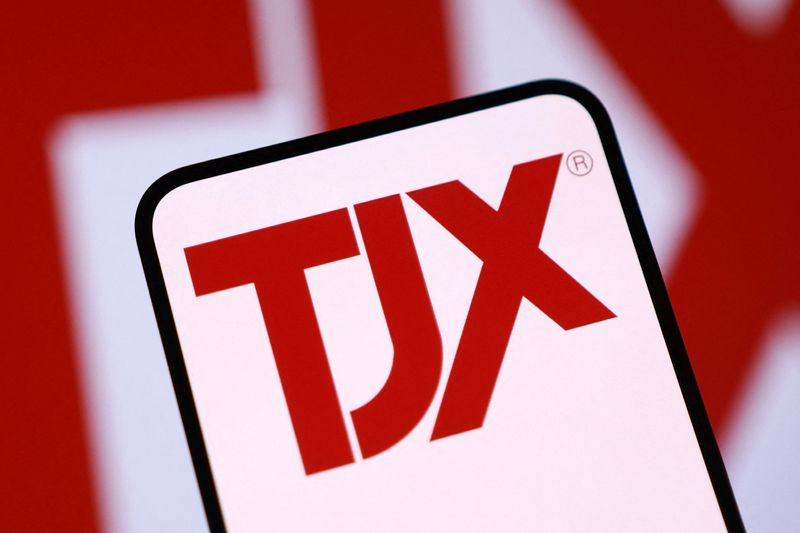
By Neil J Kanatt
(Reuters) -TJX Cos raised its annual profit forecast on Wednesday, betting on resilient demand for apparel and home furnishing at its off-price retail stores, sending its shares about 6% higher.
The company also beat estimates for second-quarter sales and profit as budget-conscious shoppers flocked to discount stores to sidestep uncertainties around how the Trump administration's tariffs will impact prices going ahead.
"The treasure hunt shopping model, which blends value with surprise-and-delight, continued to keep traffic strong and consumers engaged with the brand," Emarketer analyst Suzy Davidkhanian said.
"While its closest peer set, department stores, continue to face margin pressure and store closures, TJX delivered margin improvement and continued to grow its footprint, cementing its healthy position in a mixed economic climate."
Analysts have also said off-price retailers such as TJX-owned TJ Maxx, Ross Stores and Burlington Stores could avoid any direct hit from China tariffs in the near term due to their expansive sourcing strategies.
TJX can offset cost pressures even if the current U.S. import tariffs remain for the rest of the year, the company said on Wednesday, thanks to its vast sourcing strategy that allows it to replenish inventory dynamically.
"Their (TJX) ability to raise inventories has always been strengthening as the consumer has slowed down and has pulled back somewhat so far this year," said Matt Stucky, chief portfolio manager of equities at Northwestern Mutual Wealth Management, which invests in the company's stock.
TJX expects earnings per share for fiscal 2026 to be between $4.52 and $4.57, compared with its previous view of $4.34 to $4.43.
The company now expects comparable store sales growth of 3%, versus its prior forecast of 2% to 3%.
Net sales of $14.4 billion for the quarter ended Aug. 2 exceeded expectations of $14.13 billion, while earnings per share of $1.10 beat estimates of $1.01, according to data compiled by LSEG.
TJX's quarterly margins rose 0.3 basis points to 30.7%.
(Reporting by Neil J Kanatt in Bengaluru; Editing by Arun Koyyur and Devika Syamnath)

 Reuters US Business
Reuters US Business
 Reuters US Economy
Reuters US Economy WKOW 27
WKOW 27 CBS News
CBS News The Motley Fool
The Motley Fool Associated Press US and World News Video
Associated Press US and World News Video